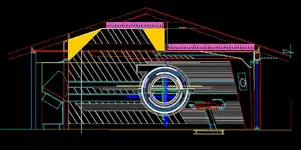P
peteuk90
New member
Hi there,
I am building a studio in my back garden!! It is basically 2 rooms. A live room and a mixing room. My real concern is in the mixing room. I have read the forums and understand that hearing the mix properly is VERY important. I have recorded stuff in my bedroom and thought it sounded great, as soon as I got in my car it sounded flawed to say the least... acoustics, bass traps etc
Getting back to my studio, the mixing room is very small. probably 3 metres width by 2 metres depth. (It has to be because of the building. How would you control the sound???
I have no in depth knowledge of bass traps and reflections etc... could some give me "lay mans" tips for this please. The guys who know blind me with science, I totally understand they have studied it and seriously applaud them it's just I am after guidlines and then I will try my trial and error way.
Sorry for you guys who are in the know. I really am in awe of you. (please be gentle with me!!)
I am building a studio in my back garden!! It is basically 2 rooms. A live room and a mixing room. My real concern is in the mixing room. I have read the forums and understand that hearing the mix properly is VERY important. I have recorded stuff in my bedroom and thought it sounded great, as soon as I got in my car it sounded flawed to say the least... acoustics, bass traps etc
Getting back to my studio, the mixing room is very small. probably 3 metres width by 2 metres depth. (It has to be because of the building. How would you control the sound???
I have no in depth knowledge of bass traps and reflections etc... could some give me "lay mans" tips for this please. The guys who know blind me with science, I totally understand they have studied it and seriously applaud them it's just I am after guidlines and then I will try my trial and error way.
Sorry for you guys who are in the know. I really am in awe of you. (please be gentle with me!!)

 How would you know if your trial was an error or not?
How would you know if your trial was an error or not?  I plan on doing the same in my one room studio. Here is a longitudinal section/ elevation of my current design. This is based on an a modified LEDE
I plan on doing the same in my one room studio. Here is a longitudinal section/ elevation of my current design. This is based on an a modified LEDE